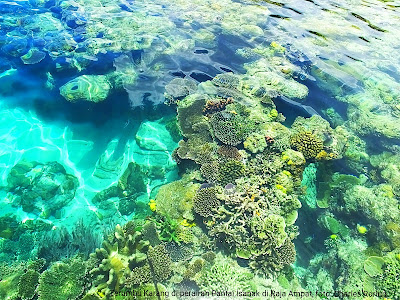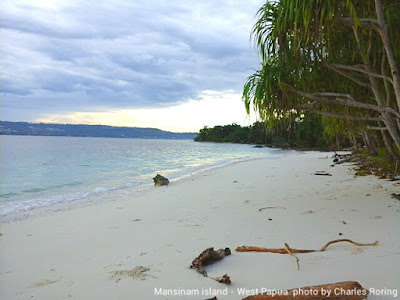by Charles Roring in Manokwari of West Papua - Indonesia
Scuba diving and coral reef are two terms that always have close relation. Most of the dive centers are located near coral reef. We can see them in Sinai of Egypt, Great Barrier Reef of Australia, Bunaken, Raja Ampat and Cendrawasih Bay of Indonesia and many marine tourist destinations around the world.
Although coral reef is important for marine tourism, its value is more. It plays a very important role in marine ecosystem. Coral reefs are home to millions of fish. They provide food for both the marine animal and human being. They do the photosynthesis thus absorbing carbon dioxide.
Therefore, the development of marine tourism must not jeopardize the existence of coral reef along the coastal region and its supported environment such as mangrove forest. Beach hotels must treat their wastes before discharging them. Fishermen, most importantly the modern ones, must be trained to practice sustainable fishing techniques. The use of poison, explosive and bottom net has to be banned by the government.
Every year, the number of scuba divers grows well. This is seen as market opportunities by owners of beach hotels and dive centers. Running a dive center needs expensive investment. Dive operators tend to invite as many divers as possible to reach their selling target. It is important for the marine park management board to limit the number of dives in certain coral reef that has been saturated. This is needed to minimize unnecessary pressures on marine ecosystem so that it can thrive and develop well.
As the source of food for human being, coral reef is important not only for the divers but also for the fishermen. When more diving centers are opened in certain location of coral reef region, they will have to respect the traditional fishing communities living in the region. Efforts on marine conservation should provide rooms for fishermen to continue fishing sustainably. It means that not all the area of the coral reef will be categorized as "No Take Zone" area.
If properly and professionally managed, scuba diving industry can get maximum benefit from the existence of coral reef without jeopardizing the interest of local fishing communities.
Also read: scuba diving and fishing communities



